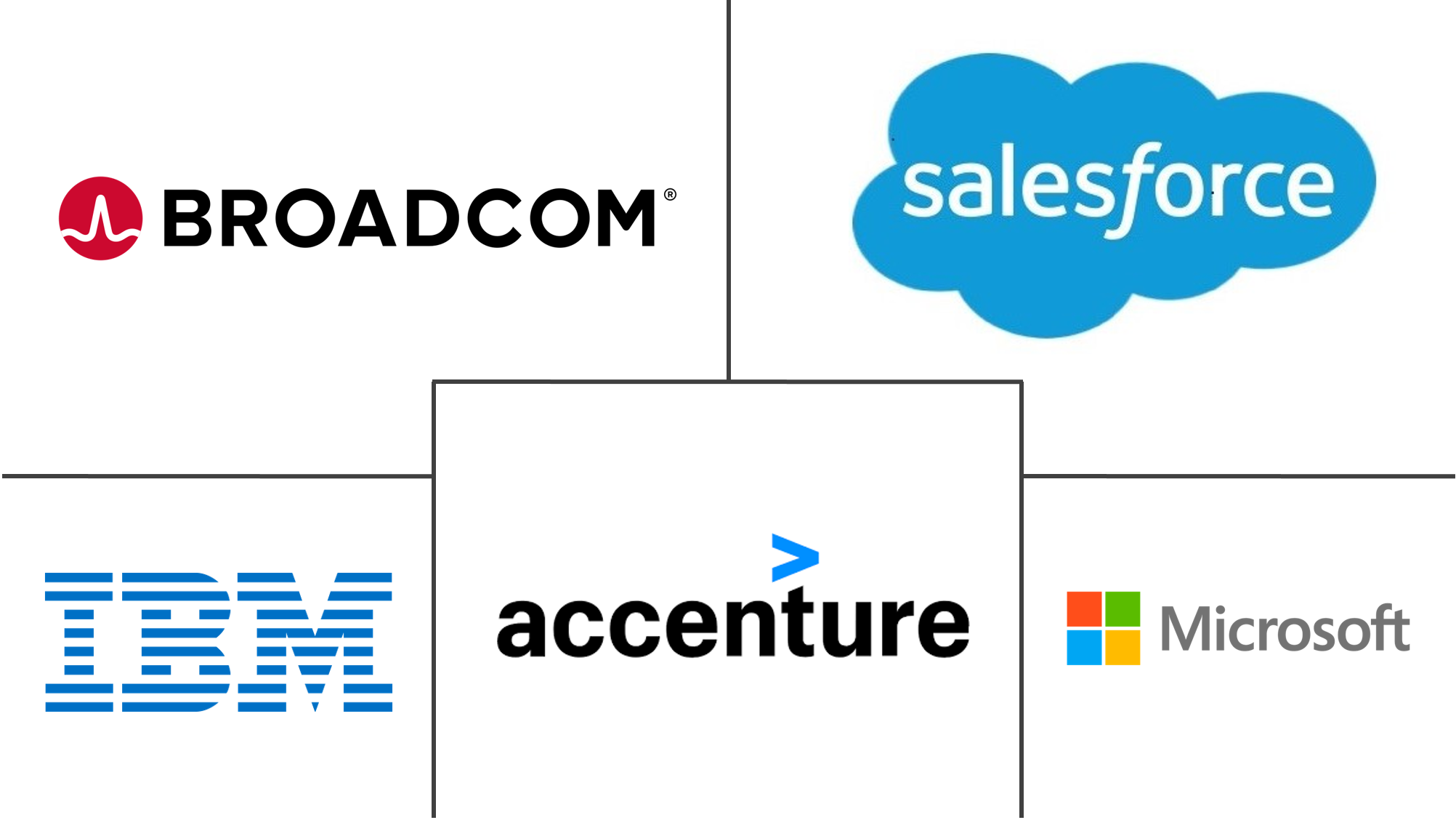Continuous Delivery Market Size and Share
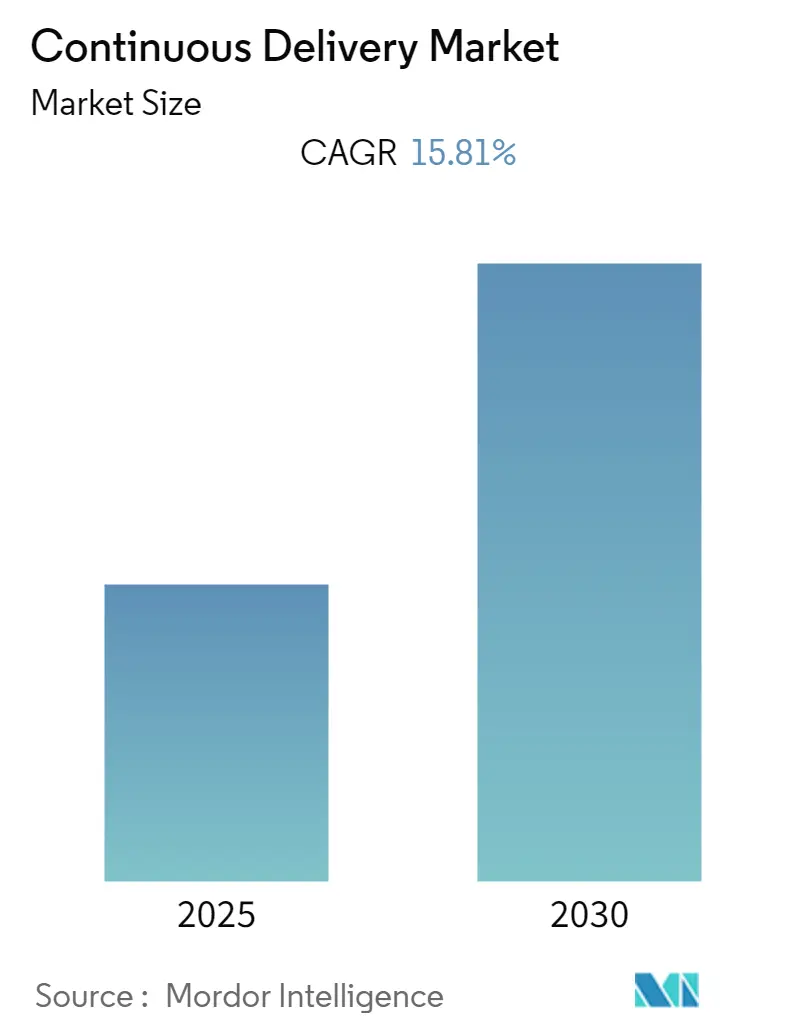
Continuous Delivery Market Analysis by Mordor Intelligence
The Continuous Delivery Market is expected to register a CAGR of 15.81% during the forecast period.
According to Perforce Software, Inc., an American software developer, 65% of managers, software developers, and executives report that their organizations have started using continuous delivery.
- The market for continuous delivery is expanding rapidly, owing primarily to the growth of artificial intelligence (AI) and machine learning (ML). AI/ML-powered technologies are transforming the software development process due to the rapid deployment of connected infrastructure and the rising autonomy of digital devices. These technologies enable self-regeneration systems, automate testing, forecast deployment results, improve release schedules, and provide smart monitoring and alarms.
- Moreover, Agile development approaches have grown in favor due to their ability to deliver software more quickly and flexibly. Continuous delivery aligns well with Agile principles, giving the software minor incremental updates rather than significant, periodic releases. According to Atlassian Corporation, an Australian software company, at least 71% of United States organizations use Agile. Further, Agile initiatives have a 64% success rate, while waterfall projects have a 49% success rate. Agile projects are 1.5X more successful than waterfall projects.
- The rising adoption of cloud computing and Infrastructure as Code has improved scaling and adaptability in infrastructure management. Continuous delivery swiftly allows enterprises to deploy and manage their applications in cloud configurations with cloud platforms and Infrastructure as Code tools. Continuous delivery CI/CD pipelines are automated processes enabling businesses and organizations to build, test, and deploy software quickly and reliably. Cloud infrastructure provides a flexible and scalable platform for running these processes, allowing companies to adapt to changing demands and optimize resource usage. These tools help organizations achieve greater business agility in several vital ways.
- However, open-source continuous delivery projects and tools are set to dominate the commercial straight delivery tools segment, driving the growth of the service steady delivery market. The constant delivery market helps businesses or enterprises change how they deliver services and run their businesses to be more accurate, save money, and be more productive. Also, it creates a lot of helpful information that helps people make better and faster decisions. This information can optimize current processes and operations or predict when, where, and how to offer the best products and services.
- However, the continuous market expansion may need to be improved due to businesses' reluctance to embrace change and integrate new technologies into their existing processes and toolchains. Many companies require support in adopting completely automated techniques for using DevOps and continuous delivery solutions.
Global Continuous Delivery Market Trends and Insights
Increasing Adoption of Cloud Technology in the Continuous Delivery Market
- Implementing continuous delivery tools on the cloud provides high scalability, flexibility, and sharing capabilities with defined authority. The people who make constant delivery tools are taking advantage of the chance to get a piece of the market.
- Continuous delivery tools provide DevOps capabilities that allow teams to collaborate, develop, test, deploy, and manage software on the cloud in one place. This helps end users access everything and build new applications on the cloud.
- Most companies are moving their data to the cloud, so industry players are developing cloud-based solutions to exploit the market opportunity. This is likely to boost market growth over the next few years.
- Google announced Cloud Build, which helps fully manage continuous delivery and integration platforms, helping build, test, and deploy software quickly and at scale. Also, companies are investing in cloud computing, which is expected to help the market grow over the next few years.
- For instance, in the current year, Amazon Web Services (AWS), a cloud computing division of Amazon.com Inc., has announced a significant investment plan for India. The company intends to invest a staggering INR 1.06 trillion (USD 13 billion) in the current year. The increasing demand for cloud services in India drives substantial financial commitment. The investment will primarily focus on expanding and strengthening AWS's cloud infrastructure nationwide.
- With the public cloud, businesses can make changes and run their operations more quickly and effectively in response to changes in the market. It improves the user-friendliness of technology. It has made building incredibly engaging consumer experiences in previously unthinkable ways possible.
- Due to cloud adoption, people and organizations have modified their behavior, and several business lines have gotten things done by getting past technological restrictions. Cloud trends affect how organizations plan to invest, how they make decisions about their digital businesses, how they choose vendors, and what technologies they choose.
- One of the prominent trends in the continuous delivery market is release management, planning, and release automation tools, which make it easier for DevOps applications and tools to deploy software to public or private clouds. Release automation tools, for example, can save time by making it easy for the staff to set up templates for deployment configurations.
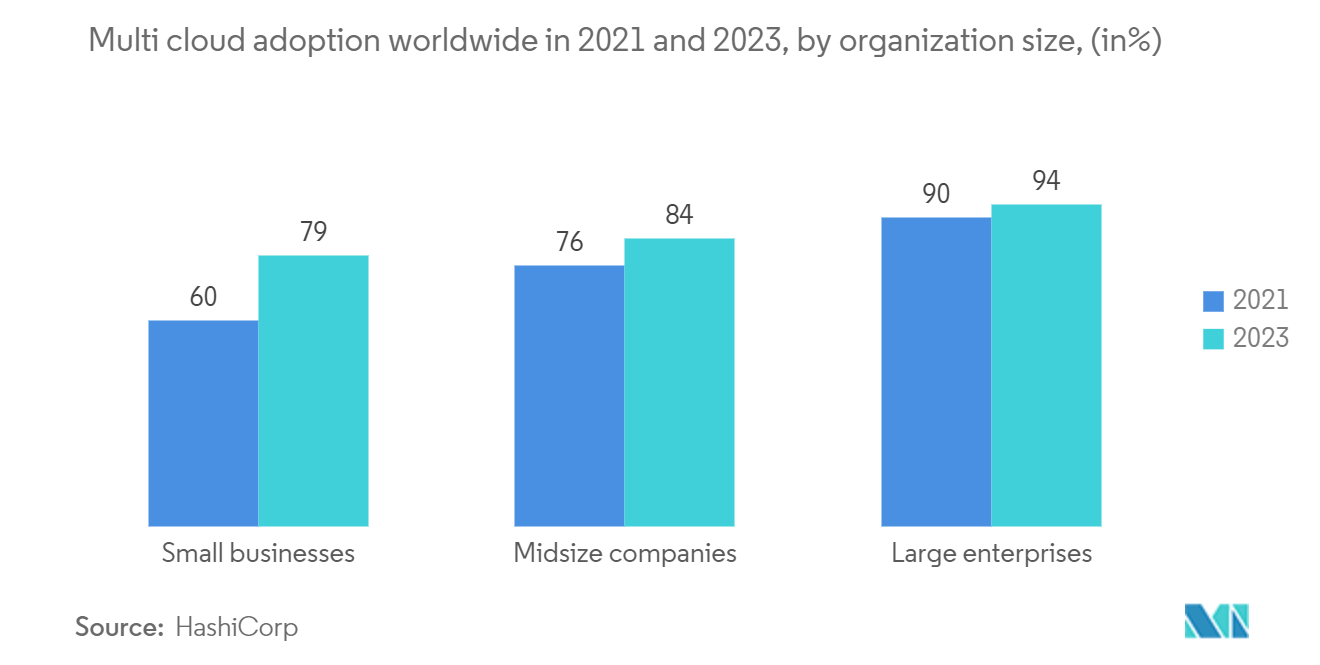
North America to Occupy Significant Market Share
- The North American region is projected to have the most significant growth in demand due to the early adoption of cloud-based technologies and IoT by the United States. However, advantages such as increased flexibility and agility and the ability to implement new applications are essential.
- Additionally, companies are adopting cloud-based applications in the North American region, and it was estimated that nearly 35% of SMBs in the United States have already deployed cloud solutions. There have been a series of mergers, collaborations, and acquisitions in North America to take advantage of this opportunity. Steltix, for example, has collaborated with Autodeploy to bring a continuous deployment and delivery software suite to European markets.
- The rise of new technologies like machine learning (ML), artificial intelligence (AI), and predictive and prescriptive analytics, and integrating these new technologies with continuous delivery models, rules, self-learning, data sets, and inference engines will help organizations run more smoothly.
- The primary driver behind these investments has been the continuous evolution of new technologies to utilize previously considered non-commercial volumes. With these investments, North America's retail, healthcare, communications, and manufacturing applications are expected to hold a significant market share.
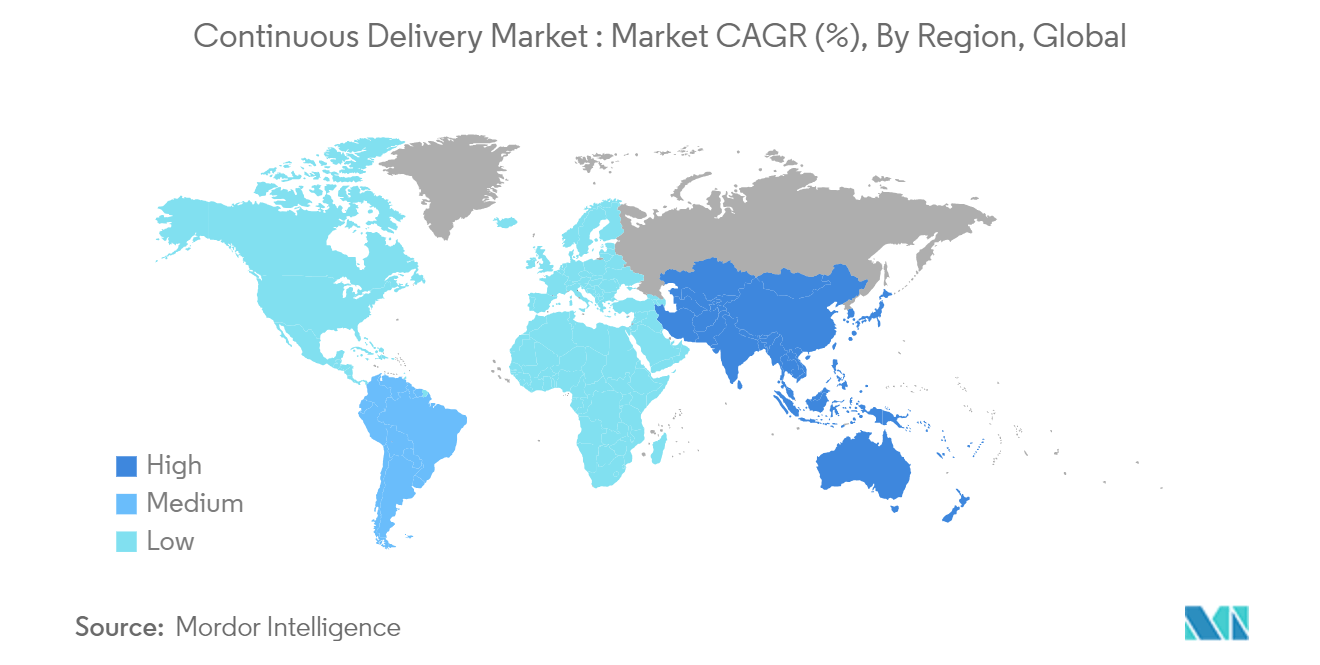
Competitive Landscape
The continuous delivery market is fragmented. With the adoption of new technologies, many players are entering the market with innovation and development, making the market competitive. Some of the key players include IBM Corporation, Microsoft Corporation, Accenture PLC, Salesforce Inc., Wipro Limited, CA Technologies (Broadcom Company), XebiaLabs (DIGITAL.AI), Electric Cloud Inc. (CloudBees Inc.), Red Hat Inc., and Atlassian, among others.
May 2024: Octopus Deploy, recognized as the industry standard for Continuous Delivery (CD), has unveiled features aimed at streamlining Kubernetes CD for large enterprises. With the introduction of a new Kubernetes agent and external feed triggers for container images and Helm, Octopus Deploy facilitates large-scale deployments to Kubernetes, doing away with the necessity for intricate and costly continuous integration (CI) scripts.
March 2024: CircleCI enhanced its CI/CD platform by introducing a release orchestration feature, empowering developers with greater control over application deployments. This addition allows development teams to deploy a specific subset of code to a live production environment, enabling them to receive immediate feedback on the code's performance.
Continuous Delivery Industry Leaders
-
Microsoft Corporation
-
IBM Corporation
-
Broadcom Inc. (CA Technologies)
-
Salesforce.com
-
Accenture PLC
- *Disclaimer: Major Players sorted in no particular order
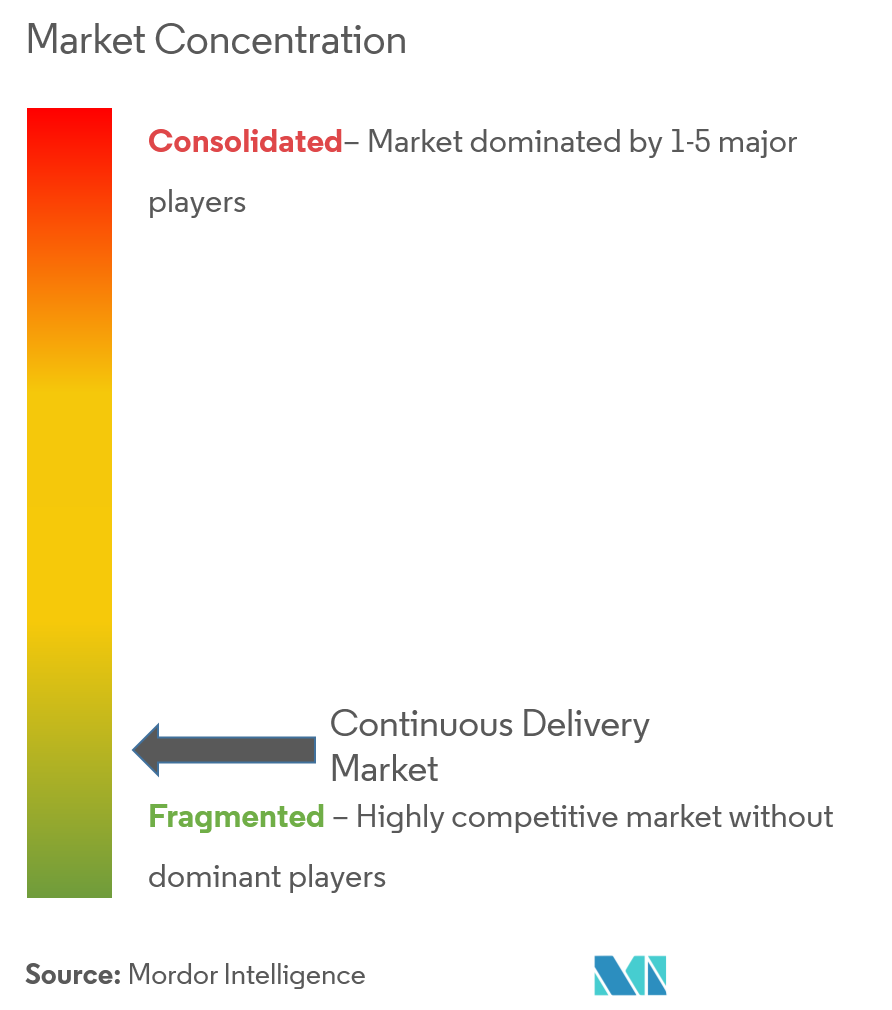
Recent Industry Developments
- May 2024: Harness Inc., a startup specializing in continuous software delivery, has secured USD 150 million in funding and is poised to broaden its platform, marking a pivotal moment in its growth trajectory. Harness has developed a continuous delivery-as-a-service platform that employs machine learning algorithms to oversee new software releases, ensuring they don't pose challenges for developers.
- February 2024: ISmile Technologies, a IT solutions provider launched its Cloud DevOps and Automation Services. This comprehensive suite is tailored to help businesses, regardless of size, boost their deployment speed, agility, and software delivery efficiency. With a focus on automating continuous delivery and streamlining IT operations, the service aims to deliver measurable business benefits.
Global Continuous Delivery Market Report Scope
Continuous delivery refers to processes and methodologies that enable software teams to regularly and rapidly release high-quality code updates to production. It speeds up the software development process by automating build, testing, and deployment, minimizing the time between code changes and end-user deployment.
The Continuous Delivery Market is segmented by enterprise and small- and medium-sized enterprises), by end-user industry (BFSI, telecom & IT, retail and consumer goods, healthcare and life sciences, manufacturing, government and defense), and by geography (North America, Europe, Asia Pacific, Latin America, and the Middle East and Africa).
The market sizes and forecasts are provided in terms of value (in USD) for all the above segments.
| Cloud |
| On-premise |
| Large Enterprises |
| Small and Medium-sized Enterprises |
| BFSI |
| Telecom and IT |
| Retail and Consumer Goods |
| Healthcare and Life Sciences |
| Manufacturing |
| Government and Defense |
| Other End User Industries |
| North America |
| Europe |
| Asia |
| Latin America |
| Middle East and Africa |
| Deployment Type | Cloud |
| On-premise | |
| Organization Size | Large Enterprises |
| Small and Medium-sized Enterprises | |
| End User Industry | BFSI |
| Telecom and IT | |
| Retail and Consumer Goods | |
| Healthcare and Life Sciences | |
| Manufacturing | |
| Government and Defense | |
| Other End User Industries | |
| Geography*** | North America |
| Europe | |
| Asia | |
| Latin America | |
| Middle East and Africa |
Key Questions Answered in the Report
What is the current Continuous Delivery Market size?
The Continuous Delivery Market is projected to register a CAGR of 15.81% during the forecast period (2025-2030)
Who are the key players in Continuous Delivery Market?
Microsoft Corporation, IBM Corporation, Broadcom Inc. (CA Technologies), Salesforce.com and Accenture PLC are the major companies operating in the Continuous Delivery Market.
Which is the fastest growing region in Continuous Delivery Market?
Asia-Pacific is estimated to grow at the highest CAGR over the forecast period (2025-2030).
Which region has the biggest share in Continuous Delivery Market?
In 2025, the North America accounts for the largest market share in Continuous Delivery Market.
What years does this Continuous Delivery Market cover?
The report covers the Continuous Delivery Market historical market size for years: 2019, 2020, 2021, 2022, 2023 and 2024. The report also forecasts the Continuous Delivery Market size for years: 2025, 2026, 2027, 2028, 2029 and 2030.
Page last updated on:
Continuous Delivery Market Report
Statistics for the 2025 Continuous Delivery market share, size and revenue growth rate, created by Mordor Intelligence™ Industry Reports. Continuous Delivery analysis includes a market forecast outlook for 2025 to 2030 and historical overview. Get a sample of this industry analysis as a free report PDF download.
